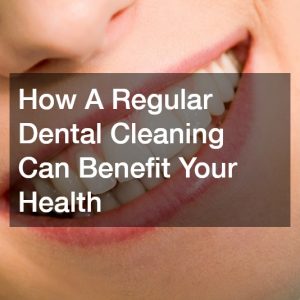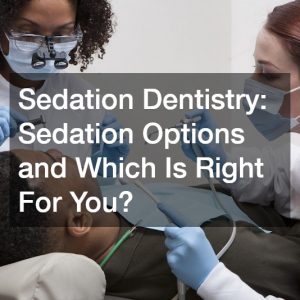Understanding when to seek immediate dental care can be crucial for your oral health. This article explores the common scenarios where visiting an emergency dentist is advisable. Recognizing the signs of dental emergencies not only alleviates pain but also prevents further complications.
What Constitutes a Dental Emergency?
Severe Toothache
A severe toothache can often indicate a serious dental issue that needs immediate attention, such as a cavity, abscess, or gum disease. When a toothache becomes intolerable, it might be a sign that the pulp inside the tooth is infected or inflamed, a condition that can lead to more severe infections if left untreated. This is why seeking the expertise of an emergency dentist is crucial for avoiding further damage and restoring oral health.
Ignoring severe pain might lead to the development of an abscess, which is a pocket of pus caused by a bacterial infection. An abscess is not only painful but can also lead to systemic health issues if the bacteria spread beyond the oral cavity. Therefore, if you experience a persistent or worsening toothache, it’s advisable to contact an emergency dentist immediately to alleviate pain and prevent the issue from escalating.
Emergency dentists are equipped to handle severe toothaches by diagnosing the underlying cause and offering prompt treatment. Whether the pain is due to a cavity requiring a filling, an infection necessitating a root canal, or other issues, swift intervention can significantly reduce discomfort and safeguard your dental health.
Broken or Chipped Tooth
A cracked or broken tooth can expose inner layers to bacteria, which requires urgent treatment to prevent infection and maintain the tooth’s function. The structural integrity of the tooth may become compromised, increasing the risk of further damage and leading to complications like infections or abscesses inside the tooth or gums. Prompt attention can mitigate these risks and preserve your oral wellbeing.
It’s crucial to seek emergency dental care if you experience a broken tooth as this can affect both the aesthetics and function of your mouth. The emergency dentist will assess the severity of the break to determine the most effective course of action, which might include bonding, crowns, or veneers to restore the tooth’s shape and function.
Taking action quickly can also help maintain oral health by preventing issues with bite alignment or difficulties with eating and speaking. Emergency dentists provide the necessary interventions to repair broken teeth, ensuring long-term dental stability and preventing secondary issues arising from unaddressed breaks.
Knocked-Out Tooth
A knocked-out tooth, especially in adults, requires prompt action and care to potentially save the tooth. When a tooth is avulsed, the chances of successful reinsertion decrease significantly if not attended to promptly; ideally, you should see a dentist within 30 minutes. Keeping the tooth moist, for example by placing it in a glass of milk, can help keep the root cells alive and increase the likelihood of saving the tooth.
Emergency dentists are trained to handle such situations by attempting to re-implant the tooth and stabilize it. This process involves cleaning the tooth if necessary, repositioning it carefully into the socket, and possibly using a splint to hold the tooth in place while the surrounding bone and tissue heal.
The urgency in treating knocked-out teeth is crucial for maintaining dental alignment and preventing future complications such as shifting teeth or bone loss in the jaw. By seeking immediate care, you support the best outcomes for your smile and oral health longevity.
When to Visit an Emergency Dentist vs. Routine Dentist
Unbearable pain
The intensity of pain can often determine if the situation calls for emergency dental services or a scheduled visit. Unbearable pain usually signifies that something has gone severely wrong, often requiring an immediate evaluation to determine the best course of action. Waiting for a routine visit in cases like this can lead to a worsening condition and an increase in the treatment required.
In scenarios where pain interferes with daily life, work, or sleep, an immediate visit to an emergency dentist can provide much-needed relief. Emergency dentists are prepared to diagnose and treat acute dental issues that cause severe pain, which might include treatments such as root canals, extractions, or other necessary interventions. Seeking help for persistent, severe pain ensures the problem is addressed quickly and effectively.
Pain is your body’s way of signaling something needs attention. Addressing intense discomfort with urgency aids in not just pain management but also in preventing further complications that can arise from untreated dental issues. An emergency dentist provides the immediate care required to restore comfort and health to your mouth.
Bleeding Gums or Mouth
Persistent bleeding is a signal that immediate dental assessment is needed to diagnose and treat the cause. Bleeding can be symptomatic of various issues, including trauma, advanced gum disease, or oral infections. Addressing these situations swiftly can prevent more severe health issues or complications like significant blood loss.
Emergency dentists are skilled in evaluating the cause of bleeding and take immediate measures to stop it and address its root cause. This might involve cleaning the affected area, treating infections, or providing care for injuries. Such prompt interventions can protect against further damage and ensure the oral cavity returns to normal function promptly.
When bleeding is accompanied by swelling, pain, or other unusual symptoms, it underlines the need for emergency care. The emergency dentist will provide necessary treatments to halt bleeding and may offer further guidance or follow-up care designed to maintain oral health and prevent recurrence of the problem.
What to Expect During an Emergency Dental Visit
Initial Assessment and Diagnosis
The emergency dentist will evaluate the situation, identify the cause, and propose a treatment plan. This first step is vital as it provides a clear understanding of the issue at hand, allowing for efficient and targeted treatment. During the assessment, the dentist may perform various tests or use imaging to gain comprehensive insights into your dental health.
Part of the initial evaluation involves the dentist discussing your symptoms and any relevant medical history to build a complete picture of the issue. This step is crucial for ensuring that the proposed treatment plan is both safe and effective, minimizing risks of adverse reactions or complications.
Following the assessment, the dentist will explain the diagnosis and recommend appropriate treatment options. This provides you with an understanding of the necessary steps to address your dental emergency, empowering you with the knowledge needed to make informed decisions about your care.
Immediate Treatment Options
Treatment during an emergency dental visit may involve pain management, repairing damage, or tooth extraction depending on the severity of the case. Pain relief is often the priority, with dentists employing local anesthesia or other methods to ease discomfort, allowing for a more comfortable experience during treatment.
The dentist may repair damage through procedures like fillings, bonding, or using crowns to restore structural integrity to damaged teeth. These quick fixes aim to restore function and aesthetics, providing immediate improvement and relief from discomfort or dysfunction.
In cases where the tooth cannot be preserved, extraction might become necessary. The emergency dentist performs extractions with care to ensure minimal discomfort and optimal healing. Post-procedure, they may discuss options like implants or bridges to replace missing teeth and maintain oral function.
Follow-Up Care
After addressing the emergency, the dentist may schedule follow-up appointments to ensure long-term recovery. These visits serve to monitor healing, address any complications, and make additional adjustments as needed to maintain oral health and restore functionality.
Follow-up care often involves discussions of preventive measures or lifestyle changes needed to avoid future dental emergencies. The dentist may offer personalized advice or recommend regular check-ups to keep your teeth and gums healthy, minimizing the risk of recurring issues.
Long-term recovery is supported by adhering to the dentist’s recommendations and attending follow-up appointments. This commitment helps ensure that any treated issues remain resolved, promoting overall health and preventing future emergencies.
Dental emergencies are unpredictable but knowing when to see an emergency dentist can save your teeth and relieve pain. Always pay attention to unusual symptoms and seek immediate care when in doubt to maintain your oral health. Swift, informed actions during dental emergencies are essential for effective treatment and sustaining long-term dental well-being.






